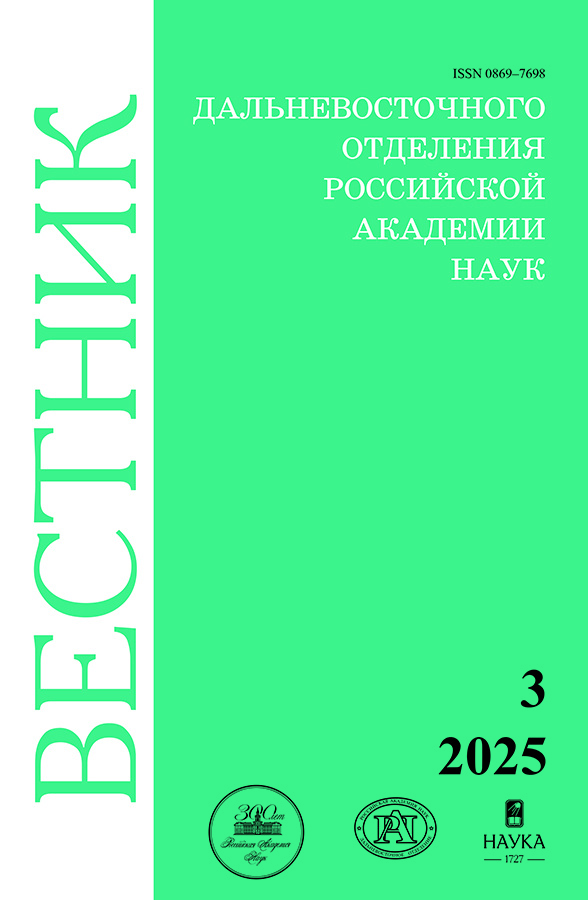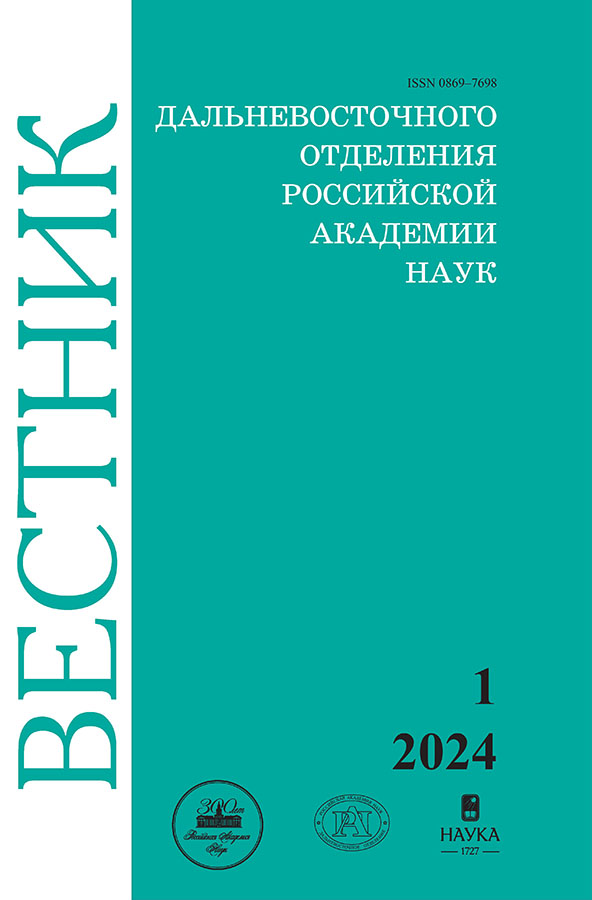CoF2/C/CF/PTFE nanocomposite synthesized in plasma, nanodispersed Co3O4 obtained from it and their magnetic properties
- Authors: Kuryavyi V.G.1, Tkachenko I.I.1, Zverev G.A.1, Ustinov A.Y.1
-
Affiliations:
- Institute of Chemistry, FEB RAS
- Issue: No 1 (2024)
- Pages: 113-125
- Section: Chemical Sciences. Advanced materials
- URL: https://permmedjournal.ru/0869-7698/article/view/676046
- DOI: https://doi.org/10.31857/S0869769824010087
- EDN: https://elibrary.ru/legujg
- ID: 676046
Cite item
Full Text
Abstract
The CoF2/C/CF/PTFE nanocomposite was synthesized in the plasma of a pulsed high-voltage discharge. CoF2 nanoparticles are distributed in two size ranges ~20–100 nm and ~3–10 nm. After calcining the composite, the nanodispersed powder was obtained consisting of Co3O4 nanoparticles with the same particle size distribution. SQUID magnetometry was used to study the temperature and field dependences of the magnetization of the samples in the range of 300–2 K. On the graphs of temperature dependences, for both types of samples, at two different temperatures, peak-like changes occur, attributed to the transitions of CoF2 or Co3O4 nanoparticles, with decreasing temperature, in antiferromagnetic state. The transition temperature TN was estimated from the peak maxima. The existence of two transition temperatures is explained by size effects, taking into account the distribution of particle sizes in two different ranges. At temperatures below TN, a shift of the magnetic hysteresis loops to the region of negative fields was found, which is due to the AFM/FM interaction between the core and shell of nanoparticles. For both types of samples, there is a hysteresis in the temperature dependences of FC and ZFC. The manifestation of hysteresis can be explained in the general case by the presence of the metastable state formed in an external magnetic field during the interaction of the magnetic moments of nanoparticles, in this case, arising due to the uncompensated spins on their surface. It is concluded that the effect of particle size on the shift of the transition temperature to the AFM state is more significant in CoF2 nanoparticles than in Co3O4 nanoparticles.
Keywords
Full Text
About the authors
Valeriy G. Kuryavyi
Institute of Chemistry, FEB RAS
Author for correspondence.
Email: kvg@ich.dvo.ru
ORCID iD: 0000-0002-7129-8129
Candidate of Sciences in Chemistry, Senior Researcher
Russian Federation, VladivostokIvan I. Tkachenko
Institute of Chemistry, FEB RAS
Email: tkachenko@ich.dvo.ru
ORCID iD: 0000-0002-1770-1546
Candidate of Sciences in Chemistry, Senior Researcher
Russian Federation, VladivostokGrigoriy A. Zverev
Institute of Chemistry, FEB RAS
Email: zverev@ich.dvo.ru
ORCID iD: 0000-0002-3945-9121
Candidate of Sciences in Chemistry, Researcher
Russian Federation, VladivostokAleksandr Y. Ustinov
Institute of Chemistry, FEB RAS
Email: all_vl@mail.ru
ORCID iD: 0000-0002-4562-017X
Doctor of Sciences in Physics and Mathematics, Professor
Russian Federation, VladivostokReferences
- Kuryavyi V. G., Buznik V. M., Ustinov A. Yu., Sukhoverkhov S. A., Pavlov A. D., Slobodyuk A. B., Tkachenko I. A., Kvach A. A., Kaidalova T. A. Nanocomposite Synthesized in Plasma of Pulse High-Voltage Discharge Initiated between Copper Electrodes in the Presence of Fluoroplast. Inorganic Materials: Applied Research. 2019;10(1):184–194.
- Kuryavyi V. G., Zverev G. A., Tkachenko I. A., Slobodyuk A. B., Gerasimenko A. V., Ustinov A. Yu., Bouznik V. M. Nanocomposite Obtained in the Plasma of a Pulsed High Voltage Discharge Using Nickel Electrodes and PTFE. Advanced Nano Research. 2021:1(1):10–26.
- Opra D. P., Gnedenkov S. V., Sokolov A. A., Kuryavyi V. G., Ustinov A. Yu., Kaidalova T. A., Sinebryukhov S. L. Nanostructured composite FeOF–FeF3 as anode material for Li-ion battery: the original method of pulsed high-voltage discharge. Solid State Phenomena. 2016; 245:109–115.
- Kuryavyi V. G., Bouznik V. M., Ustinov A. Yu., Lukiyanchuk I. V., Pavlov A. D. Nanodispersed Pt/C catalyst and nanosized polytetrafluoroethylene fabricated after treatment of PTFE F4 in pulse high-voltage discharge plasma Vestnik of the FEB RAS. 2016;(6):41–47. (In Russ.).
- Kuryavyi V. G., Pavlov A. D., Suhoverhov S. V., Slobodyuk A. B., Zverev G. A., Bouznik V. M. Transformations of a fluoroplastics substance during the processing of fluoroplast in a plasma of the pulsed high-voltage discharge and subsequent calcination. Vestnik of the FEB RAS. 2022;(6):66–76. (In Russ.).
- Astrov D. N., Borovik-Romanov A.S., Orlova M. P. Magnetic properties of cobalt fluoride in the antiferromagnetic state. Journal of Experimental and Theoretical Physics. 1957; 33:812–815.
- Salah A. Makhlouf. Magnetic properties of Co3O4 nanoparticles. Journal of Magnetism and Magnetic Materials. 2002; 246:184–190.
- Roth W. L. The magnetic structure of Co3O4. Journal of Physics and Chemistry of Solids. 1964;25(1):1–10.
- Zhu H. T., Luo J., Liang J. K., Rao G. H., Li J. B., Zhang J. Y., Du Z. M. Synthesis and magnetic properties of antiferromagnetic Co3O4 nanoparticles. Physica B: Condensed Matter. 2008;403(18):3141–3145.
- Benitez M. J., Petracic O., Tuysuz H., Schuth F., Zabel H. Decoupling of magnetic core and shell contributions in antiferromagnetic Co3O4 nanostructures. EPL. 2009;88. 27004.
- Vilakazi B. M. A thermogravimetric investigation into the synthesis of cobalt fluoride. Pretoria; 2018. 105 p.
- Mitkin V. N. Types of inorganic fluorocarbon polymer materials and structure–property correlation problems. Journal of Structural Chemistry. 2003;44(1):82–115.
- Bouznik V. M., Fomin V. M., Alkhimov A. P. et al. Metallopolimernye kompozity: poluchenie, svoistva, primenenie = [Metal-polymer composites: obtaining, properties, application]. Novosibirsk: SB RAS; 2005. 260 s. (In Russ.).
- Andreev M. N., Rebrov A. K., Safonov A. I., Timoshenko N. I. Issledovanie processov osazhdeniya tonkih teflonovyh plenok gazostrujnym metodom. Vestnik NGU, Seriya: Fizika. 2007;2(4):65–62. (In Russ.).
- Setton R., Bernier P, Lefrant S. Carbon molecules and materials. L.-N.Y.: Taylor and Francis; 2002. 489 p.
- Ferrari A. C. Raman spectroscopy of graphene and graphite: Disorder, electron-phonon coupling, doping and nonadiabatic effects. Solid State Communications. 2007;143(1/2):47–57.
- Tuinstra F., Koenig J. Raman spectrum of graphite. Journal of Chemical Physics. 1970;53(3):1126–1130.
- Meiklejohn W. H., Bean C. P. New magnetic anisotropy. Physical Review. 1956; 102:1413–1414.
- Tang C. W., Wang C. B., Chien S. H. Characterization of cobalt oxides studied by FT-IR. Raman, TPR and TG-MS. 2008;473(1/2):68–73.
- Diallo A., Beye A. C., Doyle T. B., Park E., Maaza M. Green synthesis of Co3O4 nanoparticles via Aspalathus linearis: Physical properties. Green Chemistry Letters and Reviews. 2015;8(3/4):30–36.
Supplementary files
















